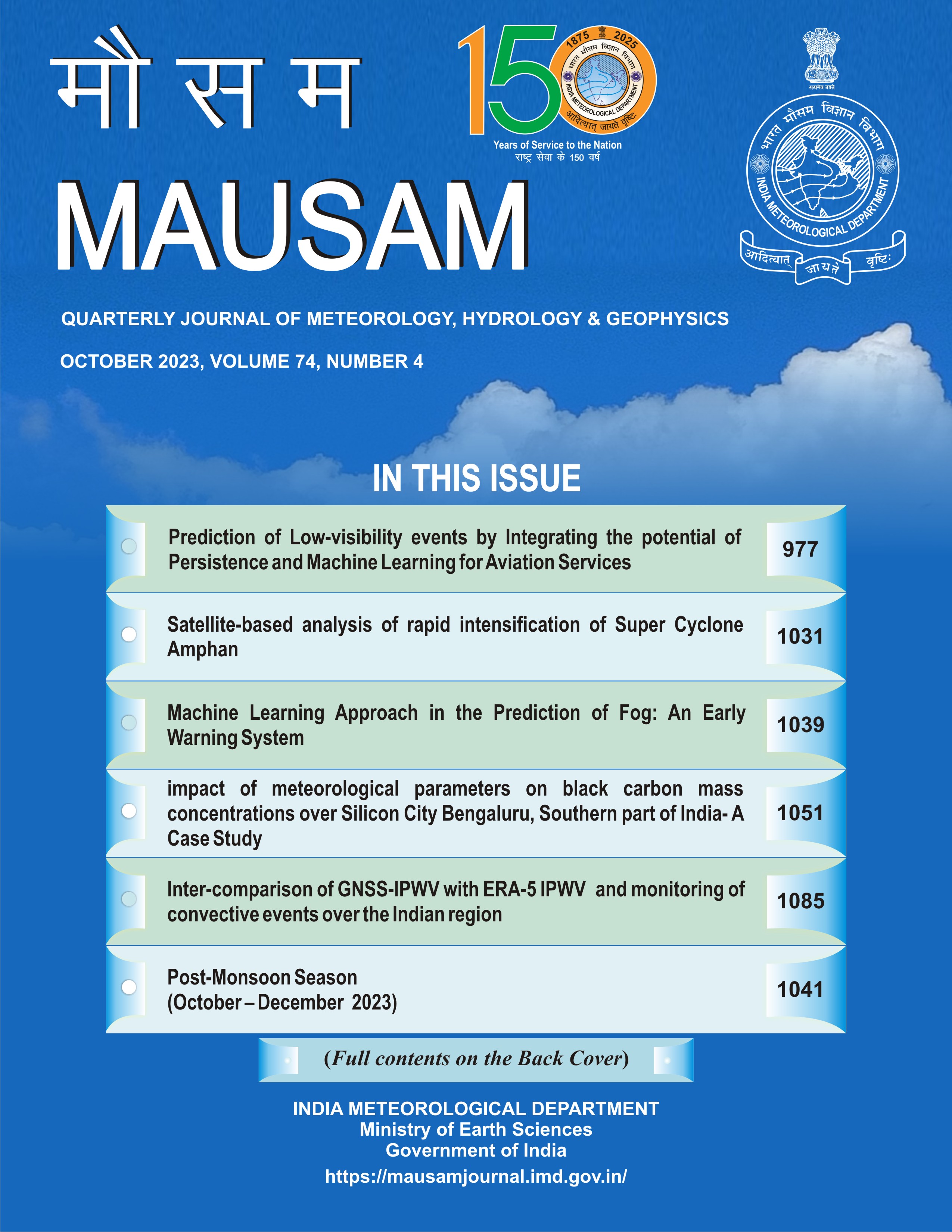Forecasting wheat productivity in Punjab, India: A weather-based model approach using detrended data and regression analysis
DOI:
https://doi.org/10.54302/mausam.v75i4.6466Abstract
Weather-based models were developed to forecast the wheat productivity of three districts in
Punjab (India) could accurately predict wheat yields two and a half months before the crop harvest. The trends in weather parameters were identified using Mann-Kendal, Sen’s Slope and Pettitt’s test.The logistic model was declared best among linear and non-linear models to remove the effect of technological factors over time. The detrended data was used for forecasting wheat productivity based on fourteen weeks of weather data of the vegetative period. The stepwise regression technique for detrended wheat productivity on weather indices revealed model II best for Amritsar, Ludhiana and Patiala districts, explaining 60%, 67% and 52% variation in the detrended wheat productivity and had root mean square percentage error 8.57%, 6.93% and 6.20% respectively. The model concluded that warm maximum and cool night temperatures of the wheat growing season will increase detrended wheat productivity, whereas an increase in rainfall and relative humidity in the morning will decrease detrended wheat productivity and hence the production.
Downloads
Published
How to Cite
Issue
Section
License
Copyright (c) 2024 MAUSAM

This work is licensed under a Creative Commons Attribution-NonCommercial 4.0 International License.
All articles published by MAUSAM are licensed under the Creative Commons Attribution 4.0 International License. This permits anyone.
Anyone is free:
- To Share - to copy, distribute and transmit the work
- To Remix - to adapt the work.
Under the following conditions:
- Share - copy and redistribute the material in any medium or format
- Adapt - remix, transform, and build upon the material for any purpose, even
commercially.



